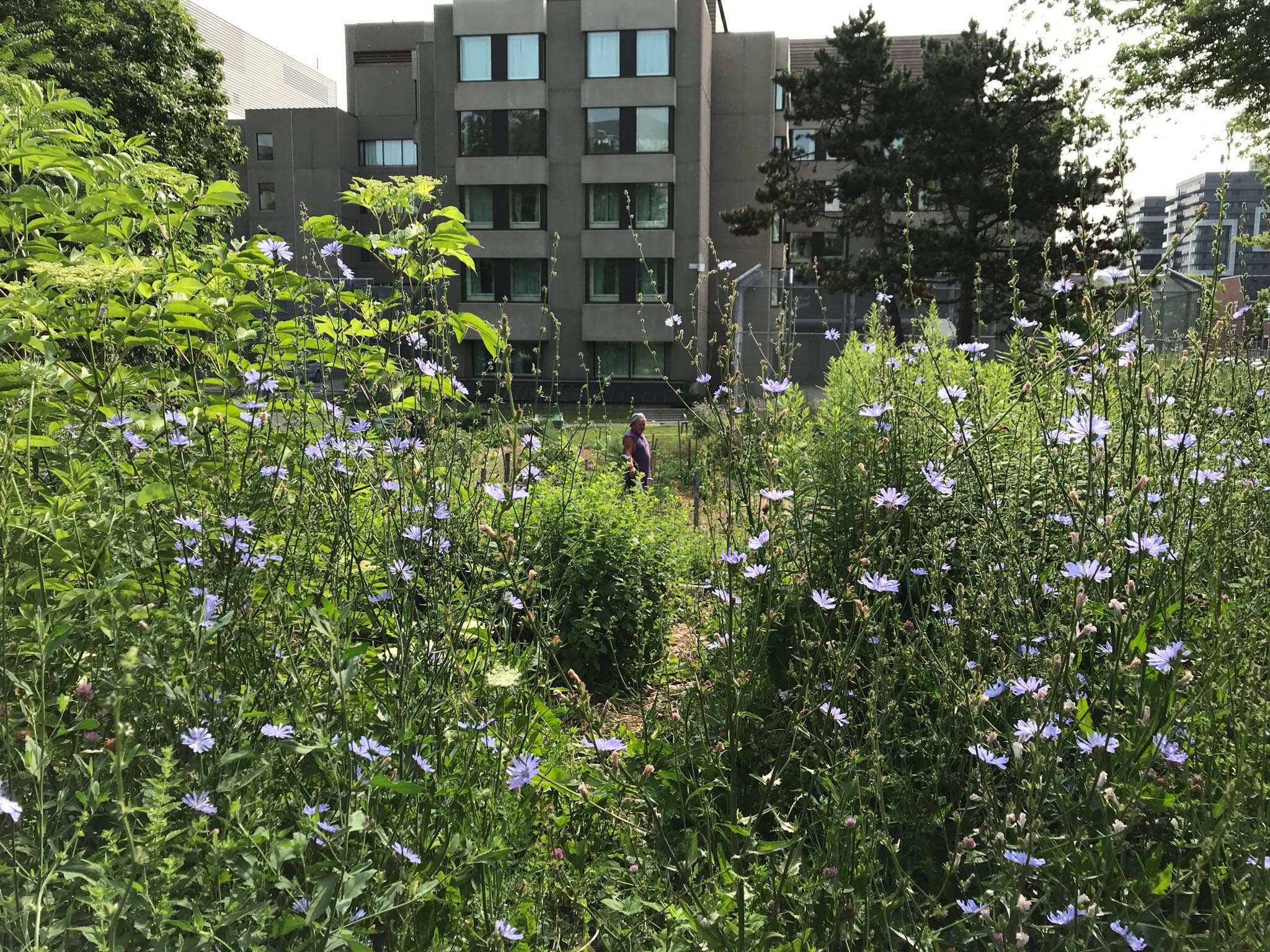Travellers’ Tales Part 1 - Urban Agriculture in Toronto

The three recipients of OGV’s latest travel bursary have returned home from their travels, eager to share their stories.
For the second year running, OGV distributed the $10,000 bursary amongst three students studying horticulture at the University of Melbourne. The bursary funds national or international travel to develop skills and knowledge in garden design and other related fields.
In our first instalment, we catch up with Clare Harvey, who is studying the Associate Degree in Urban Horticulture at Melbourne University’s Burnley campus, working at a nursery and various community gardens, and doing freelance garden design and installation. Clare used her share of the bursary to visit some of the diverse urban agriculture systems in Toronto, Canada.
Clare’s visit to Toronto included an internship with Foodshare and The Bowery Project, visits to significant new urban agriculture projects, and meetings with urban agriculture leaders and organisations. She is planning to apply what she learned to her work back home.
We’re excited at how relevant her travel experiences are to our very own Green City initiative in Melbourne!
Here’s Clare...
Toronto is a highly diverse city, both geographically and culturally, with 51% of its population born outside of Canada. It responds creatively to both of these aspects through a highly diverse and vibrant urban agriculture system. I was recently fortunate enough to escape the Melbourne winter to experience this.
 Soon to be trellised tomatoes foreground Toronto’s skyline
Soon to be trellised tomatoes foreground Toronto’s skyline
Through my internship with social justice organisation Foodshare Toronto, I worked across three of their food production sites, allowing me to experience this thriving diversity first hand. On my first day I found myself at a 2-acre market garden behind a school in the outer-suburbs.
 Harvests for market
Harvests for market
It was surprisingly hot, 35 degrees and high humidity. My shirt clung to my back as I planted out an understory of wild strawberries, yarrow, chives, comfrey and bee balm in a newly planted apple orchard.
 Planting out the apple orchard
Planting out the apple orchard
I spent many hours at this site - setting up plumbing for a produce wash station, foliar spraying tomatoes with a pungent seaweed solution and harvesting an incredible amount of onions, beetroot, greens and culturally appropriate crops like callaloo and okra for our weekly, low cost market.
 Callaloo, a type of Amaranth, cherished in many parts of the Caribbean
Callaloo, a type of Amaranth, cherished in many parts of the Caribbean
 Foliar spraying tomatoes
Foliar spraying tomatoes
On other days I was at a therapeutic garden in a mental health and addiction centre.
 Therapeutic garden
Therapeutic garden
It was a beautiful and wild space, filled with flowers, set amongst a profusion of 90 degrees angles and concrete.
 Foxgloves at the therapeutic garden
Foxgloves at the therapeutic garden
Though not focused on a high yield of food, the harvests were tangibly social. With former and current patients, I would weed, water, harvest garlic and make wildflower posies, but mostly we would just chat.
 Wildflower posies
Wildflower posies
I also worked at a rooftop garden above a school growing fruit and vegetables to supplement Foodshare’s food box program. Each raised bed contained a polyculture of companion plants - tomatoes and basil, broccoli and beans, strawberries and onions. Heat loving plants like chillies and eggplant were grown in black DIY wicking buckets and would practically grow before your eyes, making the most of the short growing season.
During my month long stay I visited many other urban agriculture sites across the city. Plants were being grown in milk crates across car parks and abandoned lots, allowing food to be grown above contaminated ground and moved on efficiently when inevitable development called.
 Plants grown in milk crates
Plants grown in milk crates
More traditional market gardens thrived on the peri-urban fringe with ‘pick-your-own-produce’ programs engaging community and aiding informal education about food. Young food forests hummed with the sound of native bees.
 One of the many rambling community gardens
One of the many rambling community gardens
Community gardens flourished in the back lanes of most neighbourhoods and throughout parks, either with communal beds or rambling allotments. Food gardens specifically for children were designed to be colourful and engaging.
 A children’s community garden
A children’s community garden
I even visited an aquaculture set up producing tilapia fish and lettuce out of a computer room in a community centre.
 An aquaculture setup growing lettuce
An aquaculture setup growing lettuce
Toronto’s high migrant population as well as its indigenous roots were reflected in the crops grown across the city: Saskatoons and mulberries stained sidewalks; ‘three sisters’ plantings of corn, squash and beans shot towards the blue sky; chokos rambled in community garden plots amongst collard greens and sweetgrass.
 A garden run by Tibetan community members
A garden run by Tibetan community members
Above all, Toronto’s robust and prolific urban agriculture network successfully celebrates and encapsulates the official motto of the city itself: ‘Diversity is our strength’.
*******
Thanks for sharing Clare! Your story provides interesting insights into Toronto’s urban agriculture projects. All the best from Open Gardens Victoria for your upcoming career in this important sector.
